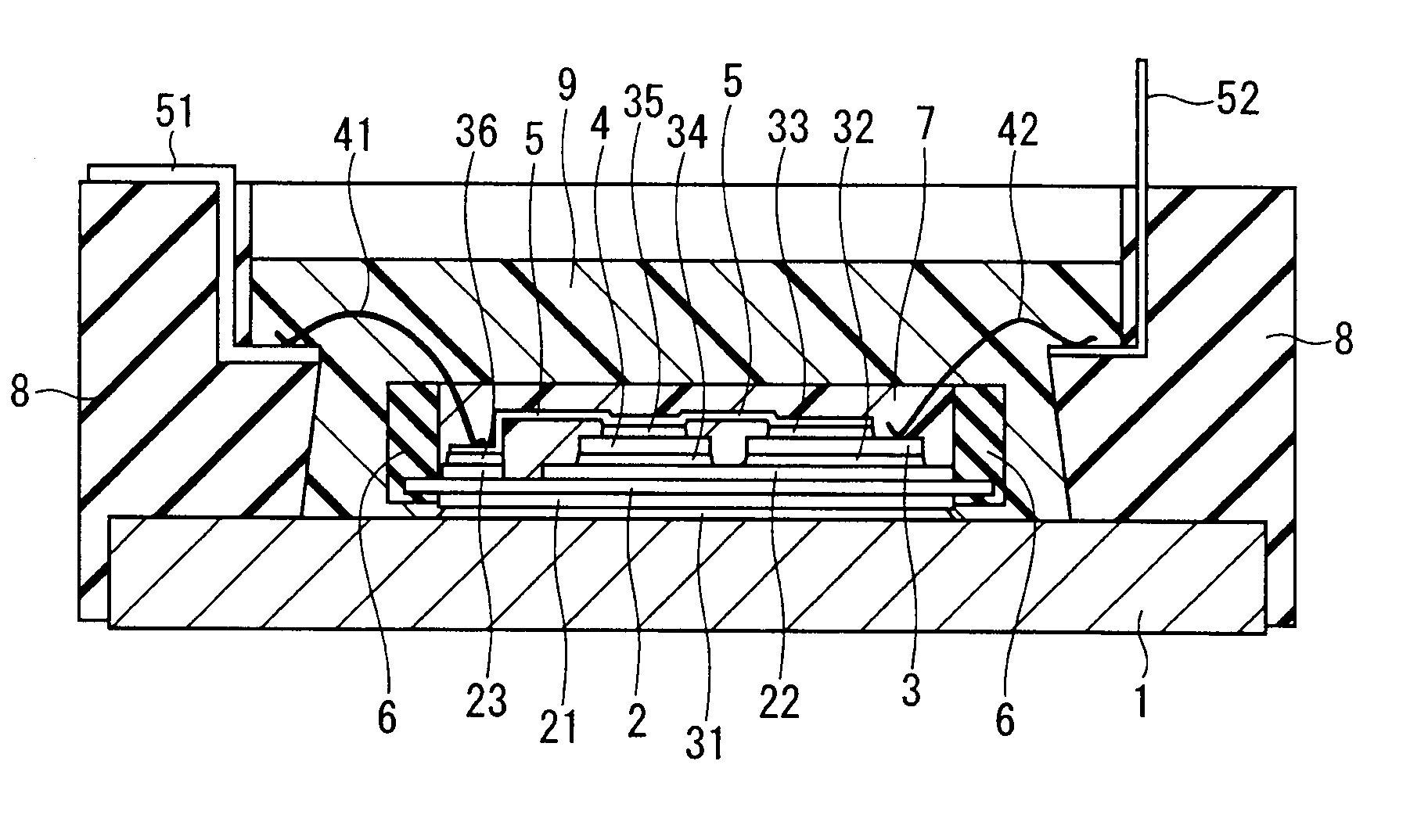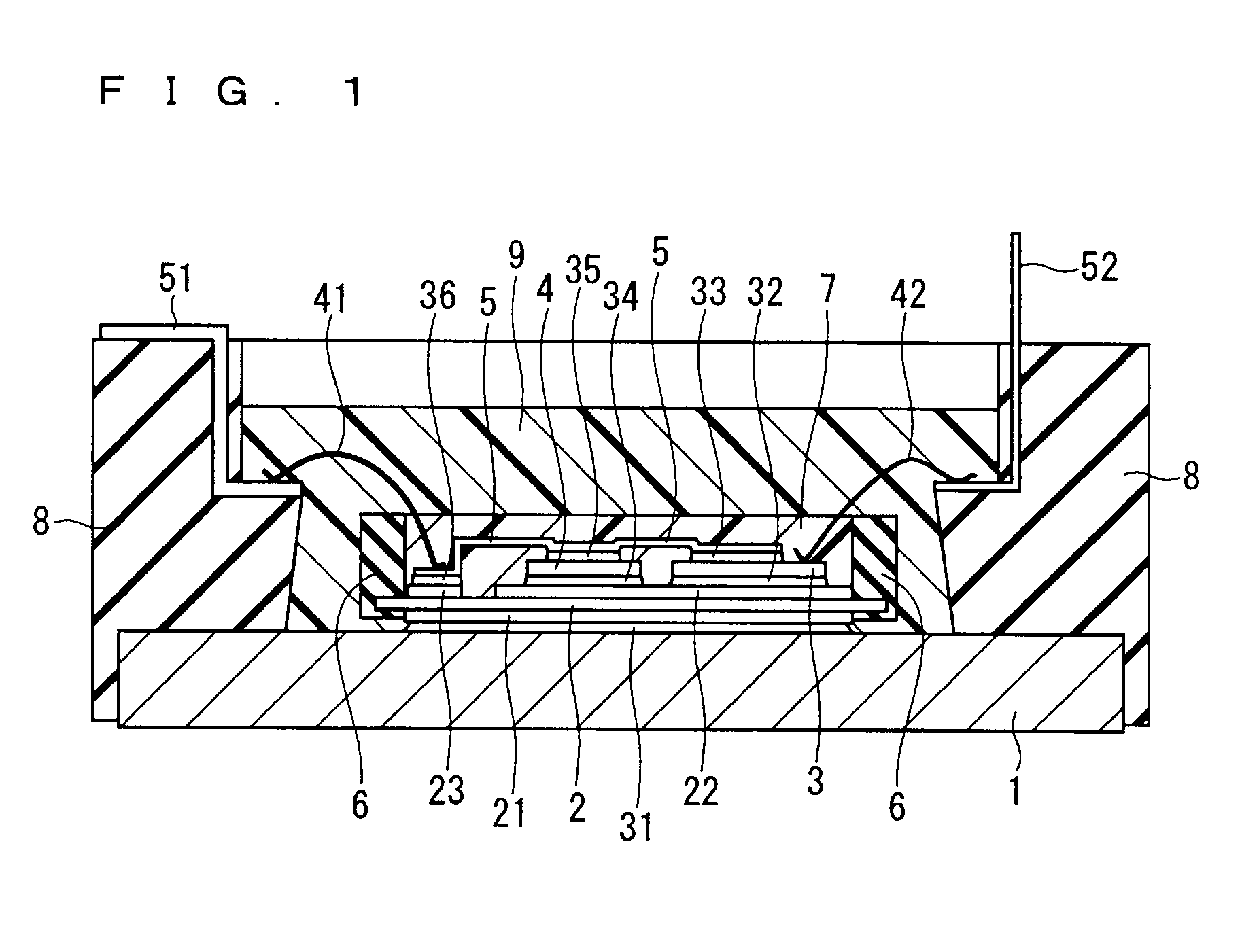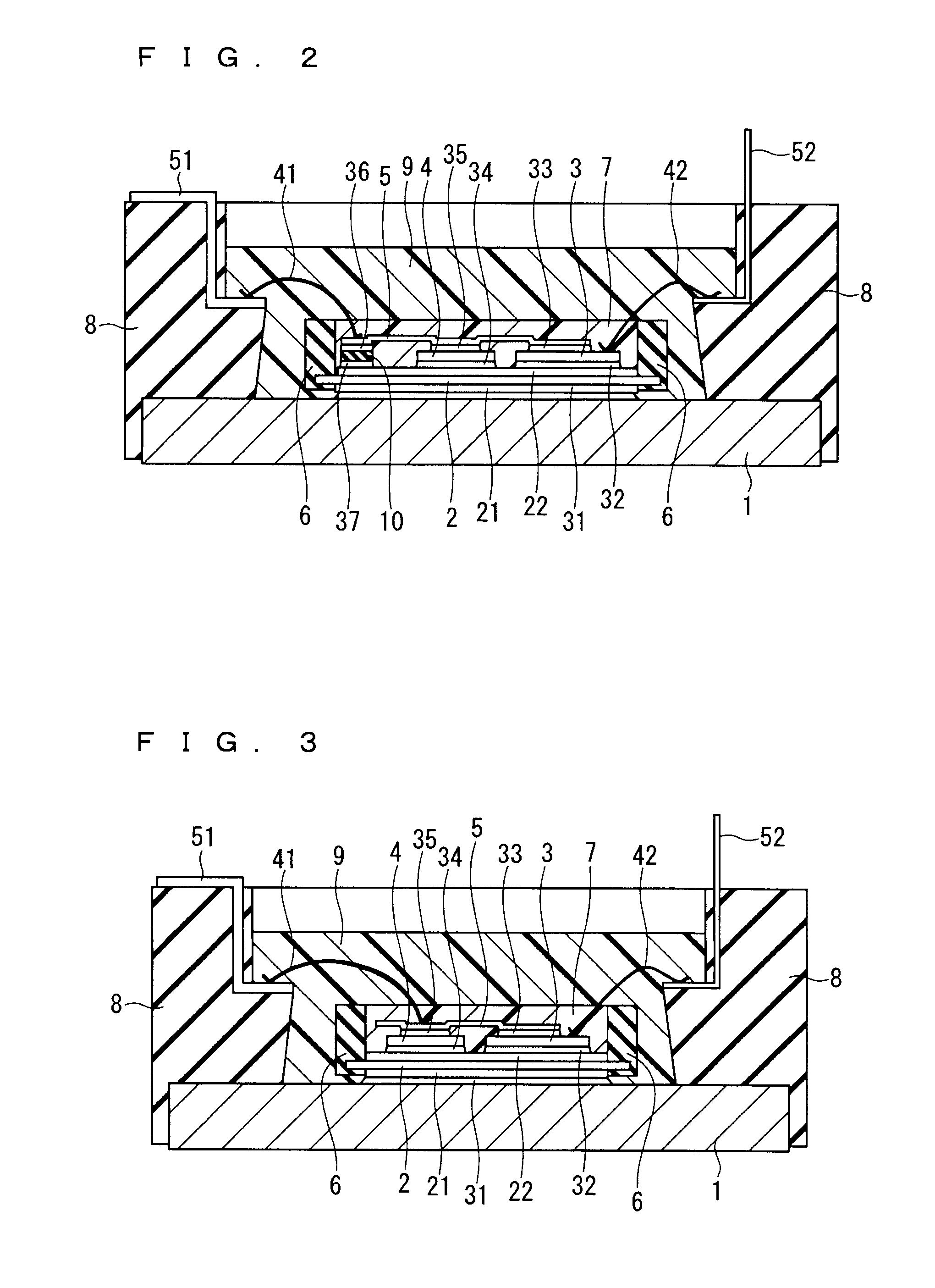Semiconductor module
a technology of semiconductor modules and modules, applied in the direction of semiconductor devices, semiconductor/solid-state device details, electrical apparatus, etc., can solve the problems of shortening the life of joint parts formed, dlb technique entails higher cost than wire bonding technique, and achieves the effect of low cost manufacturing
- Summary
- Abstract
- Description
- Claims
- Application Information
AI Technical Summary
Benefits of technology
Problems solved by technology
Method used
Image
Examples
first preferred embodiment
[0021]FIG. 1 is a sectional view showing the structure of a semiconductor module of a first preferred embodiment. The semiconductor module includes a base plate 1 made of metal such as copper, aluminum and AlSiC, and an insulating substrate joined onto the base plate 1 through solder 31. The structure of the insulating substrate is such that patterns of metal such as copper or aluminum are formed on opposite sides of a ceramic insulating plate 2 by etching technique. A metal pattern 21 is formed on the rear surface of the insulating plate 2, and the metal pattern 21 is joined through solder 31 to the base plate 1. Metal patterns 22 and 23 are formed on the front surface of the insulating plate 2. A power device chip 3 that may be an IGBT or an MOSFET, and a free-wheeling diode chip 4 are joined on the metal pattern 22 through solder 32 and solder 34 respectively.
[0022]A lead frame 5 is joined on the power device chip 3 and the free-wheeling diode chip 4 through solder 33 and solder ...
second preferred embodiment
Structure
[0029]It been confirmed by experiment that insulation degradation is generated with high probability between different electrodes. So, in a second preferred embodiment, only a single metal pattern is formed on the insulating plate 2 to maintain a single potential to enhance insulation properties.
[0030]FIG. 2 is a sectional view showing the structure of a semiconductor module of the second preferred embodiment. In this semiconductor module, only the metal pattern 22 is formed on the insulating plate 2, and the power device chip 3 and the free-wheeling diode chip 4 are joined on the metal pattern 22 through the solder 32 and the solder 34 respectively. Further, an insulating spacer 10 is joined through solder 37 to an end portion of the metal pattern 22 away from the power device chip 3. The lead frame 5 is joined through the solder 36 on the insulating spacer 10. The insulating spacer 10 is provided to insulate the lead frame 5 from the metal pattern 22. The insulating space...
third preferred embodiment
Structure
[0034]FIG. 3 is a sectional view showing the structure of a semiconductor module of a third preferred embodiment. The third preferred embodiment is intended to reduce the size of the semiconductor module by making the size of the lead frame 5 smaller than those in the first and second preferred embodiments.
[0035]The metal pattern 22 is formed on a surface of the insulating plate 2. The power device chip 3 and the free-wheeling diode chip 4 are joined on the metal pattern 22 through the solder 32 and the solder 34 respectively.
[0036]The lead frame 5 is joined on the power device chip 3 that may be an IGBT or an MOSFET and the free-wheeling diode chip 4 through the solder 33 and the solder 35 respectively to connect the power device chip 3 and the free-wheeling diode chip 4 in parallel. The lead frame 5 is connected through the aluminum wire 41 to the external main electrode 51 above the free-wheeling diode chip 4. The free-wheeling diode chip 4 increases in temperature at a ...
PUM
 Login to View More
Login to View More Abstract
Description
Claims
Application Information
 Login to View More
Login to View More - R&D
- Intellectual Property
- Life Sciences
- Materials
- Tech Scout
- Unparalleled Data Quality
- Higher Quality Content
- 60% Fewer Hallucinations
Browse by: Latest US Patents, China's latest patents, Technical Efficacy Thesaurus, Application Domain, Technology Topic, Popular Technical Reports.
© 2025 PatSnap. All rights reserved.Legal|Privacy policy|Modern Slavery Act Transparency Statement|Sitemap|About US| Contact US: help@patsnap.com



